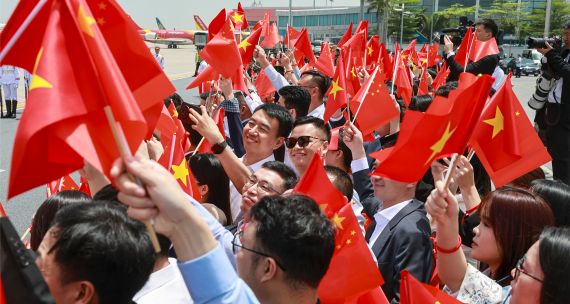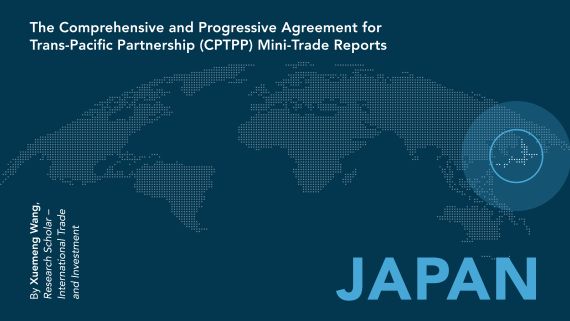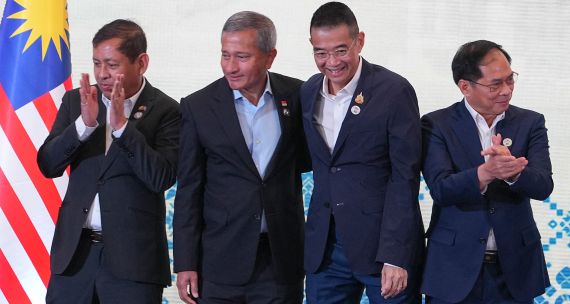Prime Minister Justin Trudeau's visit to Japan this week is important and timely.
Japan is a key trading and investment partner, and one toward which Canadians have a very positive view. Canada has much to gain from an enhanced focus on Japan—despite its economic slowdown, Japan is still an advanced market for technologies and energy, and a global leader in automotive design and production.
Ratification of the Trans-Pacific Partnership (TPP) will be an important topic of discussion but the visit provides the opportunity to lay the groundwork for a "Plan B" – bilateral agreement with Japan if the TPP fails to be ratified by a sufficient number of TPP partners. And beyond Japan, we need to be looking at formalizing trade relationships with China, and important ASEAN partners like Singapore.
The Trudeau visit, along with the G7 Summit in Japan and the nature of the pre-summit meetings that President Barack Obama is holding in Vietnam, should stimulate some discussion and reflection in policy-making circles in Ottawa and our provincial capitals. Whether this leads to actionable outcomes will affect just how well Canada will be able to foster participation in global value chains in Asia, the world's largest growth economy.
As a starting point, Canadian governments might take a page from Obama's playbook on "rebalancing" with Asia. It includes plenty of initiatives that are the kind of low-cost but meaningful steps that build trust and relationships in a region that values both. The key is consistency and commitment.
Take a look at Obama's May 25 meeting with the Young Southeast Asian Leaders Initiative. This initiative was launched a number of years ago and has grown to include engagements with thousands of young people across the ten Association of Southeast Asian Nations (ASEAN) countries. This is in addition to Obama's meeting with young Vietnamese entrepreneurs where he will be talking about opportunities arising from the Trans-Pacific Partnership agreement. Whether TPP passes this Congress is questionable, but for Vietnam, the least developed of the TPP countries, the prerequisite reforms will go a long way to opening up its market.
At the recent "Sunnylands" meeting with ASEAN leaders in California, Obama also pointed to the importance of U.S.-ASEAN co-operation in education. Here is another area where Canada excels, and where Canadian education institutions and expertise could be stepped up in a region where education is valued, and where Canada has much to offer, particularly in business and vocational training.
At that meeting, Obama also announced the creation of "US-ASEAN Connect"' a "network of hubs across the region to better co-ordinate U.S. economic engagement and better connect our entrepreneurs, investors and businesses with each other." A part of this connectivity will be providing English-language education for "aspiring innovators"—surely another niche for Canada.
Obama has now made seven visits to the ASEAN region during his term of office and he'll be going to Laos in September for the East Asia Summit. All these visits have not only increased the potential for improved commercial relationships, they also further the U.S. geopolitical strategy for Asia. Canada may not have the same security interests in Asia, but there is much to build upon across a range of sectors and activities.
Canadian companies, including those in the digital economy sphere, are already choosing Asia as their first overseas location—they are following clients and participating in global value chains. According to research conducted for the Creating Digital Opportunity Research Partnership led by the Innovation Policy Lab at University of Toronto's Munk Centre, almost half of all first locations for small high-tech firms outside Canada are in Asia.
This goes against the conventional wisdom that anticipates the U.S. market as the traditional stepping-stone. Canadian policy-makers would be well advised to do their utmost to further these relationships.
The Asia Pacific Foundation recently released a comprehensive report, Building Blocks for a Canada-Asia Strategy. The recommendations in this report are relevant to Canada's future economic well-being, along with enhancing our profile in Asia: fostering political engagement, engaging on good governance and human rights, developing innovative trade promotion strategies including for micro-SMEs, building linkages in entrepreneurship and innovation, and building Asian capacity to respond to global challenges.
If this is a region that values the symbolism of summits and strategic partnerships, then there is all the more reason for Canada to actively participate in the same.
This piece was first published in the Toronto Star on May 26, 2016



